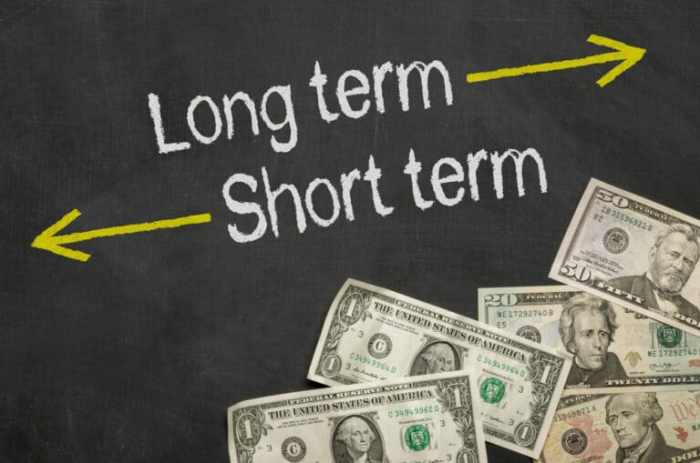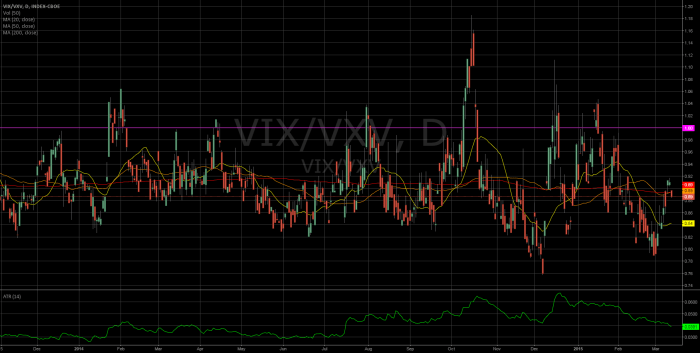
Exploring the dynamics of Short-Term vs Long-Term Market Volatility, this introduction sets the stage for an insightful discussion, blending clarity and depth to captivate readers.
It delves into the nuances of market behavior, shedding light on the distinctions between short-term and long-term volatility and their impact on investment strategies.
Short-term Market Volatility

Short-term market volatility refers to the rapid and unpredictable price fluctuations in financial markets over a short period, usually days or weeks. This volatility can be caused by a variety of factors and can have a significant impact on investors’ decisions.
Factors Contributing to Short-term Market Volatility
- Market News and Events: Unexpected news such as economic reports, geopolitical tensions, or corporate earnings can trigger short-term market volatility.
- Investor Sentiment: Sudden shifts in investor sentiment, fear, or greed can lead to rapid buying or selling, causing market volatility.
- Market Liquidity: Low liquidity in the market can amplify price swings, especially in times of uncertainty or panic.
- Regulatory Changes: Changes in regulations or policies can create uncertainty and volatility in the market as investors adjust to new rules.
Impact on Investors’ Decisions
- Increased Risk: Short-term market volatility can increase the risk of investment losses as prices fluctuate rapidly.
- Emotional Decision-making: Investors may be tempted to make emotional decisions during volatile periods, leading to buying high and selling low.
- Opportunities for Traders: Traders who can accurately predict short-term market movements can capitalize on volatility to make quick profits.
- Long-term Perspective: Investors with a long-term perspective may choose to ride out short-term volatility, focusing on the fundamentals of their investments.
Long-term Market Volatility
Long-term market volatility refers to sustained fluctuations in the prices of financial assets over an extended period, typically lasting months to years. Unlike short-term volatility, which can be caused by temporary factors like news events or economic data releases, long-term volatility is often driven by structural changes in the economy or financial markets.
Historical Events Causing Long-term Market Volatility
Several historical events have led to long-term market volatility, shaping the trajectory of financial markets and impacting investor sentiment. Some examples include:
- The Great Depression in the 1930s, characterized by a prolonged economic downturn and a significant decline in stock prices.
- The Dot-Com Bubble burst in the early 2000s, resulting in a prolonged bear market for technology stocks.
- The Global Financial Crisis of 2008, triggered by the subprime mortgage crisis, causing long-lasting effects on global markets.
Impact on Different Asset Classes
Long-term market volatility can have varied impacts on different asset classes, depending on their characteristics and underlying fundamentals.
- Stocks: Equities are often more sensitive to long-term market volatility, with prolonged downturns leading to significant losses for investors. Companies may struggle with reduced consumer spending and economic uncertainty, affecting stock prices.
- Bonds: Fixed-income securities like bonds may see increased demand during times of long-term market volatility, as investors seek safe-haven assets. Bond prices may rise as interest rates fall, providing a hedge against stock market declines.
- Real Estate: Long-term market volatility can impact the real estate market, affecting property values and investment returns. Economic instability may lead to decreased demand for real estate, impacting prices and rental income.
Differences Between Short-term and Long-term Market Volatility

Market volatility can be categorized into short-term and long-term fluctuations, each impacting investors and portfolio management strategies differently.
Causes of Short-term vs Long-term Market Volatility
Short-term market volatility is often driven by sudden events such as economic data releases, geopolitical tensions, or company-specific news. These temporary fluctuations can lead to rapid price changes in the market. On the other hand, long-term market volatility is influenced by broader economic trends, structural changes in industries, or shifts in investor sentiment over an extended period. These factors can create sustained periods of volatility in the market.
Reactions to Short-term vs Long-term Market Volatility
When faced with short-term market volatility, investors and traders may react impulsively, making decisions based on emotions rather than rational analysis. This can result in panic selling or buying, leading to increased market volatility. In contrast, long-term market volatility is often met with a more strategic approach, as investors focus on the underlying fundamentals of their investments and adjust their portfolios accordingly to weather prolonged periods of uncertainty.
Implications on Portfolio Management Strategies
Short-term market volatility may prompt investors to adopt a more active trading approach, attempting to capitalize on short-term price movements. However, this can increase transaction costs and the potential for losses. On the other hand, long-term market volatility may require a more patient and disciplined investment strategy, emphasizing diversification, risk management, and a focus on long-term goals. Portfolio managers may need to rebalance portfolios periodically to align with changing market conditions and investor objectives.
Market Analysis and Market Research
Market analysis plays a crucial role in understanding market volatility. By analyzing different factors influencing the market, investors can make informed decisions and better navigate through periods of volatility. Market research, on the other hand, helps in predicting both short-term and long-term market trends by studying historical data, market indicators, and economic factors.
Tools and Techniques for Market Analysis and Research
Market analysts use various tools and techniques to assess market volatility and make informed predictions. Some common tools include:
- Technical Analysis: This involves studying past market data, primarily price and volume, to forecast future price movements.
- Fundamental Analysis: This approach evaluates a company’s financial health, industry trends, and macroeconomic factors to determine its intrinsic value.
- Sentiment Analysis: By analyzing market sentiment through social media, news articles, and surveys, investors can gauge the overall market mood and potential market movements.
- Economic Indicators: Monitoring key economic indicators such as GDP growth, inflation rates, and unemployment figures helps in assessing the overall health of the economy and its impact on the market.
Combining these tools and techniques provides a comprehensive understanding of market dynamics and helps in making sound investment decisions during periods of market volatility.
In conclusion, navigating the realm of market volatility demands a keen understanding of both short-term and long-term trends, influencing decision-making processes and shaping portfolio management strategies.
Commonly Asked Questions
What are the main differences between short-term and long-term market volatility?
Short-term volatility is driven by immediate factors like news events, while long-term volatility stems from fundamental shifts in the market over an extended period.
How does market analysis help in understanding volatility?
Market analysis provides insights into trends and patterns, aiding investors in anticipating and navigating market volatility effectively.
Can market volatility impact different asset classes in the same way?
No, different asset classes may react differently to market volatility based on their unique characteristics and risk profiles.




